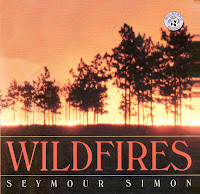Label: Video
August 12, 2010
Watch the Trailer for “Tropical Rainforests”
 Seymour Simon’s new Collins/Smithsonian book, TROPICAL RAINFORESTS, will be in store on August 24th. And we now have a 90-second video trailer so that you can preview this breathtaking photo essay book. Click here to view and enjoy!
Seymour Simon’s new Collins/Smithsonian book, TROPICAL RAINFORESTS, will be in store on August 24th. And we now have a 90-second video trailer so that you can preview this breathtaking photo essay book. Click here to view and enjoy!
Note to Teachers: This is a "safe" video, hosted on SeymourSimon.com. Clicking to watch this video will no longer take you to YouTube, or anywhere off Seymour’s website.
Posted by: Liz Nealon
August 12, 2010
When Sea Lions Play Tag…..
Our friends David Kleeman and Leslie Hornig recently took a trip to the Galapagos Islands, known for their vast number of wildlife species. Charles Darwin traveled to the Galapagos on the H.M.S. Beagle in 1831, and his field work during that five-year long journey led to his breakthrough thinking on the Theory of Evolution. In fact, it is such a unique place that in 1978 the Galapagos were declared a World Heritage Site by UNESCO, which called the 19 islands and the surrounding marine reserve a unique ‘living museum and showcase of evolution.’
 David and Leslie decided to explore this unparalleled marine reserve while they were there, and Leslie shot this delightful underwater video. She titled it: "When Sea Lions Play Tag, the Star Fish is Always ‘It’"
David and Leslie decided to explore this unparalleled marine reserve while they were there, and Leslie shot this delightful underwater video. She titled it: "When Sea Lions Play Tag, the Star Fish is Always ‘It’"
Click here to view and enjoy!
Posted by: Liz Nealon
May 28, 2010
Great Video from the SPACE JUNK Tech Challenge

We’ve written before about "The Tech Challenge," the annual team design challenge for grades 5 through 12 run by The Tech Museum in Silicon Valley. Teams who enter must use the scientific process to design a hands-on project intended to solve a real-world problem. This year’s topic was "Ridding the Universe of Space Junk," described as follows: You and your team need to design and build a solution that can help rid the Universe of Space Junk one item at a time from the deck of your temporary home - The International Space Station.
CLICK HERE to see a 5-minute video from April’s final competition - with teams of kids trying to get a simulated "inoperative satellite" to burn up on delivery by attaching two Hall Thrusters to its thruster docking ports. Size D batteries were used to represent the thrusters. Looks like it was a fun - and challenging - day!

If your family is traveling in the Southern California area this summer, this museum is full of hands-on fun for kids of all ages. Well worth a stop.
Posted by: Liz Nealon
April 7, 2010
Seymour Meets a Very Smart Robot!

We’re in Silicon Valley this week, talking to various developers about educational apps that we might create with some of my content. While we were there, we visited THE TECH in San Jose - an excellent museum of technology and innovation.
While I was there I asked this robot: WHO IS YOUR FAVORITE AUTHOR? Press PLAY for his response!
Posted by: Seymour Simon
May 31, 2009
Why did I write about Dolphins?

What’s so interesting about dolphins?
A while ago, I read a science fiction story about an ocean planet populated with intelligent water mammals such as whales and dolphins. The ocean animals of this planet even explored beyond their planet in spaceships filled with ocean water. And who were the leaders and the smartest sea life on the ocean planet? Dolphins, naturally.
What makes dolphins so smart? Why their brains of course. Dolphins have very large brains in relation to their body size. In fact, bottlenose dolphins rank second only to humans in the ratio of their brain size to body size. Just how intelligent on the dolphins that live on our planet Earth? Nobody really knows the exact answer to this question (or at least no one on Earth knows), but researchers are finding out that dolphins can and do communicate with each other and that they can even solve some puzzles and problems.
All of this is interesting, but the real reason I wrote a book about dolphins is that they are beautiful and fascinating to watch at sea and even in large public aquariums. And like with most of the books I write, even after the book is published I still am finding out new things which I wish I had put in the book. Do you know things about dolphins or have you taken pictures or video of dolphins that you would like to share with readers of Seymour Science? Send an email to Seymour Science and tell me all about it so I can post your note on my site.
Posted by: Seymour Simon
February 13, 2009
Helping a koala caught in the Australian wildfires
Terrible wildfires have swept across Victoria, Australia. There are ongoing efforts to save Koalas and other wildlife. Perhaps your class might think of a community project to earn some money to help to save Australian wildlife. There are links on this video that will tell you where to write for further information.
Posted by: Seymour Simon
February 12, 2009
A video interview with Seymour Simon

See Seymour being interviewed about his books and the way he writes.
Posted by: Seymour Simon



